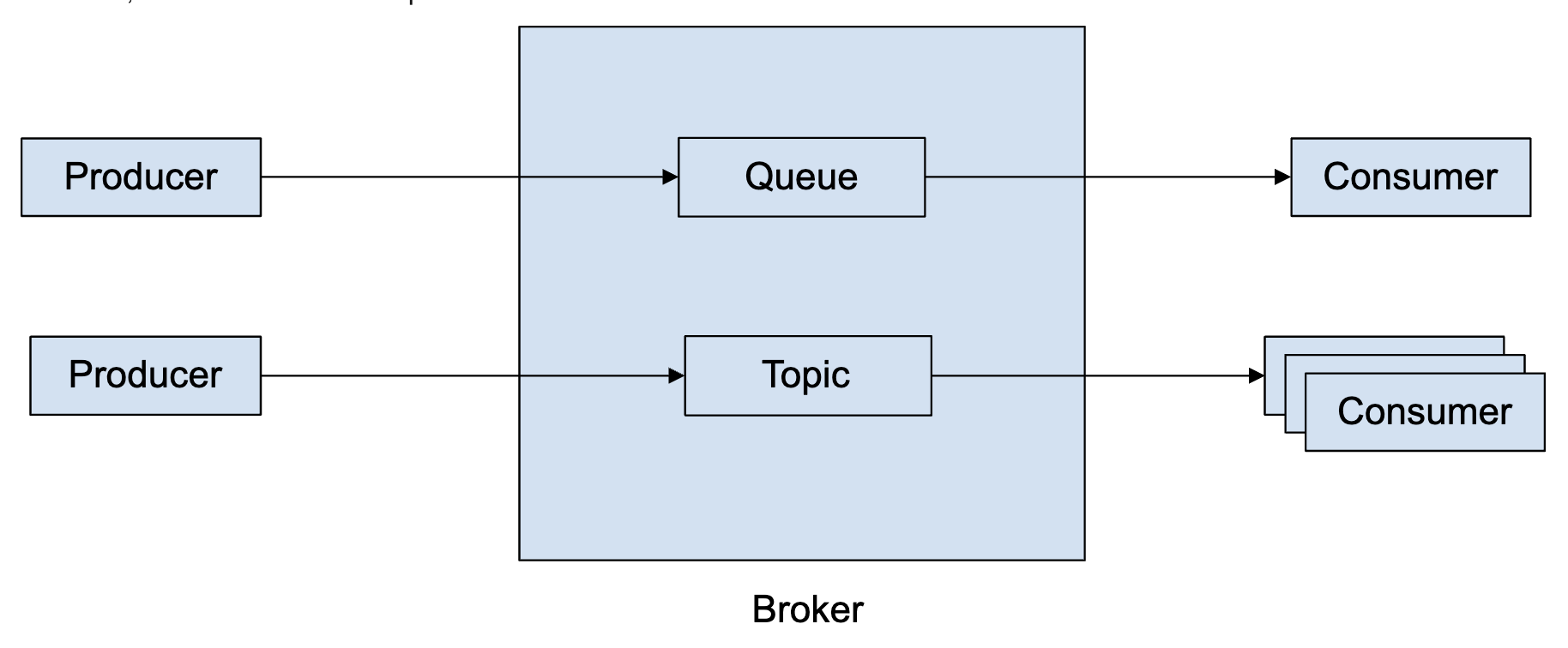Introduction
Apache ActiveMQ is an open-source, Java-based message broker that powers asynchronous communication between applications. It sends and receives messages through queues (point-to-point) and topics (publish-subscribe), and supports multiple protocols including AMQP, MQTT, STOMP, OpenWire, and REST. It integrates seamlessly with Java EE, Spring, and other enterprise platforms.
ActiveMQ plays a central role in building loosely coupled, reliable, and scalable messaging-based systems for microservices, event-driven architectures, and enterprise messaging patterns.
The following are the key components of ActiveMQ integration.
| Component | Description |
|---|---|
| Broker | Routes and manages messages; handles clients, maintains queues/topics, ensures delivery, and manages persistence. |
| Destinations | Defines where messages are sent or received. Two types: • Queue – supports point-to-point messaging • Topic – supports publish-subscribe messaging |
| Producer | Sends messages to destinations (queues or topics). |
| Consumer | Receives messages from destinations; operates synchronously or asynchronously. |
| Connection | Represents a network link between client and broker; typically created using JMS or other supported APIs. |
| Session | Provides a single-threaded context for producing and consuming messages; manages transactions. |
| Message | Represents the data being exchanged; supports text, bytes, map, object, and stream message types. |
| Persistence Store | Stores messages to disk for durability; uses KahaDB by default in ActiveMQ Classic. |
| Network Connector | Forms a network of brokers; forwards messages between brokers to support high availability and scalability. |
| Advisory Messages | Generates system messages to monitor events like consumer subscriptions and destination creation. |

To help you get started, here’s what you can do next:To configure the integration, see Working with ActiveMQ.
Use Cases
Discovery
- Discovers all the high-level components such as ActiveMQ Broker, ActiveMQ Queue, and ActiveMQ Topic.
- Publishes relationships between resources to enable a topological view and simplify maintenance.
- For more information on Heirarchy of HPE Alletra, see Resource Hierarchy
Monitoring
- Provides monitoring related to availability, capacity, performance, and usage.
- Generates alerts when defined metric thresholds are breached, notifying users of potential issues.
- For a complete list of supported metrics and details on the default monitoring configurations, see Supported Metrics and Default Monitoring Configuration
Supported Target Versions
- Include application version, API version (if applicable), and any platform limitations.
Resource Hierarchy
The following is the resource hierarchy for ActiveMQ integration.
- ActiveMQ Broker
- ActiveMQ Queues
- ActiveMQ Topics
Version History
| Application Version | Bug fixes / Enhancements |
|---|---|
| 1.0.0 | Initial version with discovery, monitoring, and Implementations. |